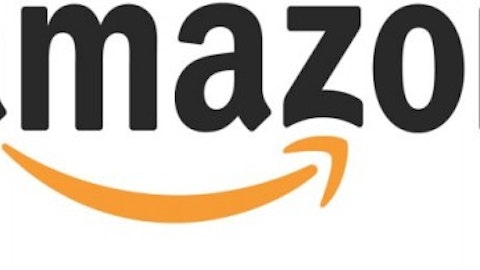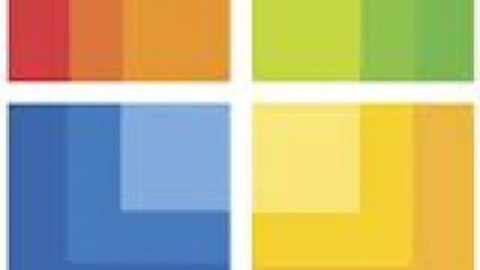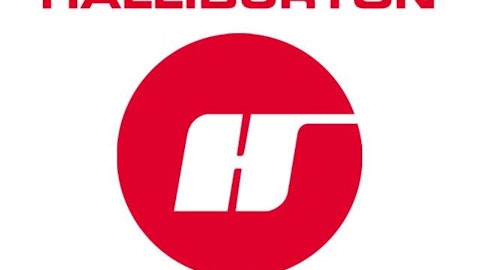Oil services companies have gotten good at hydraulic fracturing, perhaps too good at it. According to , fracs per day have increased by 50% in the Haynesville Shale. While that may seem like great news, it could be very frustrating for oil services companies. Let’s diagnose why and prescribe a potential solution that may resolve this malaise.
Early symptoms: shooting oneself in the foot
During a panel at the EIA energy conference last month, Southwestern Energy Company (NYSE:SWN) vice president Jim Tramuto declared that we had reached what he called the second quarter of the oil and gas boom. What he means is that companies once rushed to get a well in the ground just to prevent their leases from expiring. Now that those leases have been established, these companies are now focusing on optimizing their operations to get the most out of each dollar spent.
The one thing you can give the oil and gas industry credit for is that it learns quickly. New rig technology like Nabors Industries Ltd. (NYSE:NBR)’ PAce-X rig have allowed pad drilling methods to increase wells per rig by 34% in some of the more “mature” shale plays like the Eagle Ford, Bakken, and Marcellus. Also, the 50% gain in fracs per day mentioned above has come thanks to methods such as zipper fracs, which involves alternating pressure at two wells versus fracking one at a time.

Finding someone who can put this maze together in less than a day should get them another 10% (Source: commons.wikipedia.org/Joshua Doubek)
As much as exploration and production companies have to be happy with these sort of results, it is actually causing a bit of a problem for oil services companies. In the case of rigs, if each rig is able to drill 34% more wells, then a lot fewer rigs are needed. For oil services companies, frac crews normally run on day rates, so if they are doing more work in a day, fewer frack crews are needed.
Talk to your CFO if you experience bloating
This quarter, Nabors Industries Ltd. (NYSE:NBR), Halliburton Company (NYSE:HAL), and Schlumberger Limited. (NYSE:SLB) have all struggled in their pressure-pumping businesses because of oversupply in the current market. According to Nabors Industries Ltd. (NYSE:NBR) CEO Anthony Petrello, this has led to a very competitive market: “It is not unusual to bid frac jobs against 20 other pumpers, and sometimes as many as 35 show up. We have seen some instances of competitors winning bids with economics that at least from our perspective appear to be near cash break-even.”
The bad news doesn’t end there, either. These big gains in efficiency also mean that exploration and production companies are burning through their capital expenditure budgets faster than expected, which could result in a steady drop in business for oil services for the rest of the year.
And the cherry on top: It appears that increasing the total amount of fracs may not be the solution we thought it could be. I’ll leave it to Core Laboratories N.V. (NYSE:CLB) CEO David Demshur to describe it best: “[Our] evidence now shows that 80% of these stages actually flow little or no hydrocarbons into the well bore.”
If you are scoring at home, that’s an oversupplied market that may be doing significantly more work than necessary, which could see a sharp decline in activity for the rest of the year.
Gulp.
Go someplace warm — doctor’s orders
If there is one way out of this less than desirable market, it’s that the thirst for American technology and know-how in hydraulic fracturing overseas is growing everyday. Nabors Industries Ltd. (NYSE:NBR) is already in the process of shipping some of its drilling rigs to South America and is waiting on a big tender from Saudi Arabia, and Halliburton Company (NYSE:HAL) and Schlumberger Limited. (NYSE:SLB) are setting up subsidiaries in China to supply specialty hydraulic fracturing fluids. These moves have a two-fold benefit. It utilizes what would be non-working assets in the North American market, and it helps to clear the glut of equipment in the U.S. Perhaps moving some of its frac crews to these markets would help to clear the oversupply of pressure-pumping assets in the U.S. as well.
What a Fool believes
Services companies are getting better at extracting oil and gas, but with those improvements will come fits and starts as the industry gets a better handle on how to drill these new(er) shale resources. It was only last year when Halliburton Company (NYSE:HAL) took an earnings hit when it overpaid for guar gum of all things. So, investors shouldn’t be too surprised as the industry goes through these rather short undulating cycles.
The article Oil Services Have Caught the Pressure-Pumping Plague originally appeared on Fool.com is written by Tyler Crowe.
Fool contributor Tyler Crowe has no position in any stocks mentioned. You can follow him at Fool.com under the handle TMFDirtyBird, on Google +, or on Twitter, @TylerCroweFool.The Motley Fool recommends Halliburton.
Copyright © 1995 – 2013 The Motley Fool, LLC. All rights reserved. The Motley Fool has a disclosure policy.




